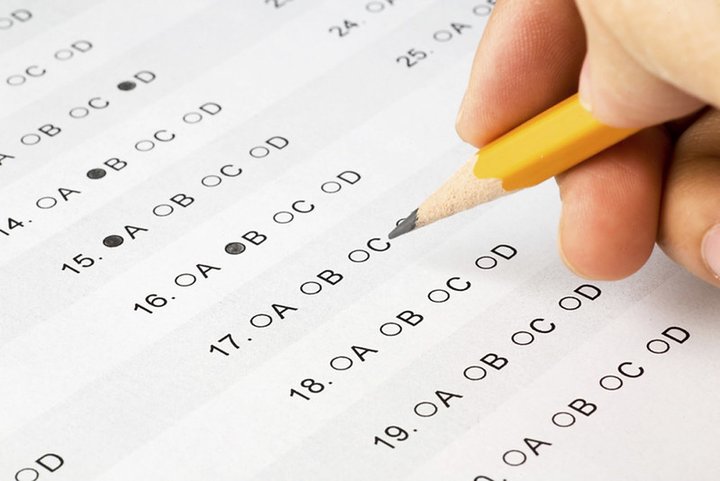
###
In a steady-but-painstakingly-slow pattern that has come to define California’s push for equity in education, statewide test scores inched up incrementally this year, though about half of the state’s students are behind in reading and only 4 in 10 students are proficient in math.
The results of the California Assessment of Student Performance and Progress (CAASPP) tests, administered to some 3.1 million students in grades 3-8 and grade 11, were released Wednesday by the state Department of Education.
Now in their fifth year, the scores told more or less the same story of incremental growth they have been telling since the state began using the test to measure student performance under newer, more rigorous Common Core-based standards.
“Education equity should mean equity for all students and right now, we are not there.”
— Superintendent of Public Instruction Tony Thurmond
On one hand, education officials say, the scores are moving in the right direction: statewide marks either rose or stayed flat in every reading and math portion of the exam, also known as Smarter Balanced, except for eighth-grade math. On the other, the scores are moving at what some experts and civil-rights advocates have previously described as a glacially slow pace.
The state’s high-school juniors were among the most-improved grades in reading and math this year, but that rise followed a significant drop the prior year that negated gains made in lower grades. A majority of students statewide, for the first time, were proficient in reading, but more than 49% of students still aren’t at grade level.
And though economically disadvantaged students seem to have improved at a faster rate than the rest of their peers in some areas, their passing rates in reading and math remain further behind. For example, 39% of the state’s economically disadvantaged students passed the reading exam and 27.48% passed math, while the rest of their peers passed reading (69.48% proficiency) and math (58.88% passing) at twice the rate.
Achievement gaps highlighted by the exam also remained stark. The state’s black students (33% proficiency in reading and 20.55% in math) and Latino students (40.56% passing in reading and 28% in math) far underperformed their white and Asian peers. More than 65% of California’s white students passed the Smarter Balanced reading portion, and 54.23% passed math, while nearly 77% of Asian students were proficient in language arts and 74.37% passed math.
Superintendent of Public Instruction Tony Thurmond spoke with urgency about the situation.
“Disparities between students of color and their white and Asian peers continue from year to year and demonstrate the importance of our priority initiative of closing the achievement gap,” Thurmond said in a statement. “Education equity should mean equity for all students and right now, we are not there.”
Results from the Smarter Balanced fall into four buckets: “standard not met,” “standard nearly met,” “standard met,” and “standard exceeded.” Scores that fall under the latter two achievement levels are considered passing marks.
Over the five years in which California students have taken the Smarter Balanced exam, statewide reading scores have improved nearly 7 percentage points, from 44% proficiency in 2015 to 50.87% in 2019. Statewide math scores have gone up at a near-identical rate, from 33% proficiency in 2015 to 39.73% in 2019.
Though gaps persist among California’s poor students, they are improving at a faster rate than the rest of their peers. A “cohort” of economically disadvantaged students who took this year’s exams as eighth-graders improved their proficiency rates by 3.36 percentage points in reading, while their peers’ reading scores remained virtually flat over this three-year span. While math proficiency only rose up 0.83 percentage points among this disadvantaged cohort, the passing rate for those not classified as economically disadvantaged went down 1.65 points.
How California’s economically disadvantaged students improve or stagnate on the Smarter Balanced exam is significant because a new study by Stanford education researcher Sean Reardon has found that, despite a longstanding focus on school segregation, poverty and the income levels of student’s household are most correlated with gaps in student learning.
California has the nation’s largest public school system, with 6.2 million students, and the bulk of the state budget, by law, goes to public schools. That said, the state’s per pupil investment has lagged nationally, and fell significantly during the Great Recession. In recent years, state spending per pupil has slowly crept up the rankings, but California still is only hovering around average despite a rise from $9,067 to $11,993 per student over the past five years.
The state budget signed in June by Gov. Gavin Newsom included a $2.7 billion increase in the state’s investment compared to last year, including more than $400 million for early education and child care programs and $646 million for students with disabilities.
California’s shift toward more rigorous standards — and more rigorous testing — has been in progress for nearly a decade. But a Public Policy Institute of California survey released in September found that about 30% of the state’s schools, many of them rural, still hadn’t fully adopted Common Core. Even where the new standards are in place, PPIC found, gains have been modest so far.
###
CALmatters.org is a nonprofit, nonpartisan media venture explaining California policies and politics.
CLICK TO MANAGE